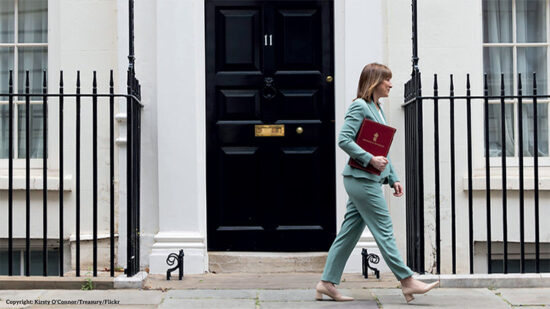Sterling
Data wise last week was good for Sterling, with inflation and unemployment both falling and retail sales rebounding, but the currency did not reflect the positive tone, falling against both the US dollar and Euro.
The recent trend looks to continue with the GBP/USD range bound and Sterling drifting lower against the Euro as tensions ease in Europe. The Rightmove House Price Index kicked off last week with a 3.5% rise, the biggest jump in 8 months. This goes a long way to reversing the Olympic inspired price lull over the summer which saw prices slump 4.6%. Inflation data was a nice surprise, with Consumer Prices falling to their lowest level in almost 3 years, although the fall may be short lived with the major energy companies announcing prices rises in the months ahead.
Another point of caution was that factory gate inflation rose at 2.5%, higher than expected, and economists believe that inflation will edge up again in the coming months. Jobless claims fell in August, helping to push the unemployment rate down to 7.9% and the number of people in employment up to 29.6 million, the highest on record since records began in 1971. While the figures were good news for the government, they provided a ‘productivity puzzle’ for the Central Bank who are at a loss to understand how jobs were created while the country was falling into recession. Unemployment fell 50k in the 3 months to end August, with almost half of these jobs created in the London area, suggesting the Olympics provided an employment boost in the capital.
Not too much in the way of market moving data this week, although the advance estimate of Q3 GDP will be watched closely to see how far the economy has bounced back (early estimates are around 1%).
For now sterling seems to be stuck in a range against the US dollar, with $1.6000 forming a good base, but heavy resistance as it approaches the $1.6250-$1.6300 area. GBP/EUR could continue to lose ground again this week. We look for a slow drift lower towards the €1.2200 area through the week.
US dollar
Lots of data releases and most of them positive, but the dollar didn’t benefit very much. The logic seems to be that a stronger US economy is good for global markets and this makes investors happier to hold riskier assets, hence a move out of the dollar. Not sure if the logic holds true, but the early week fall in the greenback may have more to do with uncertainty over upcoming US elections and the looming ‘fiscal cliff’ in January.
Anyway back to data and Retail sales in the U.S. rose more than projected in September, reflecting broad-based gains that indicate household spending helped bolster economic growth last quarter. The 1.1 percent gain followed a revised 1.2 percent increase in August that was the biggest since October 2010. The October Empire State Manufacturing Survey indicates that conditions for New York manufacturers continued to decline for a third consecutive month.
The general business conditions index increased four points but remained negative at -6.2. Inflation figures were slightly higher than expected due to higher energy costs, and are now 2.0% year-on-year, up from 1.7% in August. Capacity Utilisation, which measures the extent to which plants are achieving their full potential, rose to 78.3%, while Industrial production numbers confirmed that manufacturing is expanding, albeit at a slower pace.
The Federal Reserve will announce their latest interest rate decision on Wednesday and no change is expected. On Friday the first estimate of the monthly GDP and the advance estimates are looking for an improvement on last month’s 1.3% which was worse than analyst’s predictions. The dollar has lost modest ground over that last few weeks as tensions ease in Europe and investors move tentatively back into riskier currencies. However going forward the greenback may face some headwinds with uncertainty over the elections and the looming ‘fiscal cliff’ that needs to be addressed very quickly.
Uncertainty may lead to some diversification out of the dollar in the short term, so we look for slightly lower levels near term – expect a move back towards $1.6200+ versus the pound.
Euro
The euro made ground through last week on the back of increased optimism that Spain might get the lifeline that it needs, even though it hasn’t yet asked for a bailout. All eyes were on the EU Summit in Brussels for any new snippets of news but their main focus of attention was to put in place a euro-area banking supervisor by year end which could open the prospect of direct aid to Spanish banks.
The data kicked off with the German ZEW investor confidence rising for a second month to -11.5 in October, helped by hopes that the sovereign debt crisis can be contained. The gauge of current economic conditions fell to 10 from 12.6, while the economic conditions index increased to -2.4, slightly below expectations. Euro wide inflation remained stable at 2.6% for September, down from 3% a year ago although the range of individual countries figures was quite wide, ranging from 6.4% in Hungary to just 0.3% in Greece.
The flash Manufacturing and Service PMI’s are out this week and will give some more clues as to the health or otherwise of business in the euro zone. The advance Q3 GDP is expected to show an improvement on the previous quarter, so there is room for disappointment but this is a flash estimate so will not carry too much weight. Investors are increasing more confident that the worst in behind the euro and while there will be doubtless be hiccups along the way, the single currency seems to be gaining support slowly.
We feel that it will continue to improve slowly against both the US dollar and Sterling, with some analysts calling for $1.35 versus US and €1.20 versus Sterling by year end. We feel this may be a little strong and there is every chance of a further reversal, but expect the euro to stay on the front foot this week.
New Zealand Dollar
The New Zealand dollar lost ground early last week only to recover by the close on hopeful news from Europe and better economic data out of China. The cause of the early weakness was the inflation figures which rose at a slower than expected pace in the third quarter. The consumer price index rose 0.3% in the three months ended September 30, slower than the 0.5% forecast by the central bank. The annual pace of inflation slowed to 0.8%, below the 1% forecast by the Reserve Bank and outside its target band of between 1% and 3%. It is the first time it has fallen outside its target range since 2002.
Investors immediately took this as a signal that the Reserve Bank would look to lower interest rates in order to try and stimulate the economy and weaken a currency that has been trading near is all time highs against both the US dollar and sterling. The Reserve Bank had recently signalled in its minutes that there would be no change in interest rates until late 2013, so any change would be a change of course.
This week sees the Reserve Bank of New Zealand meeting and announcement on interest rates. While inflation has come in below the target range, it is too early for the central bank to start lowering rates. They have previously stated that rates will be unchanged until late 2013 so any move would certainly send the currency lower. We look for the status quo to continue for now, although further down the line, we feel the easing tensions in Europe will see a move out of the NZD as investors look for higher yielding, riskier assets.
Steady as she goes for now.
Australian Dollar
The Aussie made good gains through last week against both Sterling and the US dollar on the back of better economic data out of China, its biggest export market, and more hopeful news out of Europe. Its own data was generally positive, and with investors more comfortable with riskier trades, the AUD found good support particularly with interest rates higher than its industrialised neighbours. Home loans rebounded to show a 1.8% increase, above analyst’s forecasts, while New Motor Vehicle Sales rose 4.7% to post another record high of sales for new vehicles.
The Leading Index data, which indicates the likely pace of economic activity three to nine months ahead, rose 0.5% in August taking the annualized growth rate above trend for the first time since August 2011. Business confidence rose to minus two in the quarter, up from minus three in the previous quarter. Business conditions in some of the consumer dependant and housing related industries improved in the September quarter, most probably helped by recent interest rate cuts. Business conditions rose to +1 from -2 in the June quarter.
The Aussie was helped through last week by hopes that Spain might be edging towards asking for a bailout. Comments from senior lawmakers in Germany that they would be open to providing a precautionary credit line from Europe’s rescue fund were helpful in easing tensions, as were suggestions from Mrs Merkel’s advisors that there was less resistance to a full sovereign bailout. Moody’s also held the Spanish credit rating steady which helped investor sentiment. Data from China that their economy grew in line with expectations in the third quarter was positive for the Aussie. Chinese industrial production, retail sales and investment all exceeded forecasts.
AUD data is light this week with only inflation expected to fall comfortably within the central banks 2-3% range. The currency has been under pressure of late with the fall in commodity prices and the slowdown in China both having an impact on the currency. However with easing tensions in Europe, investors are happier to take on more risky assets and the AUD has gained accordingly. With interest rates expected to be cut again next month, the rally may be short lived, and the central bank will not welcome a much higher exchange rate as they have held that up as one of the causes of the slowing growth (against the US dollar, the AUD averaged 1.0290 over the last 2 years, compared to just 0.73 in the prior 10 years).
We see the rally petering out fairly soon and the AUD to head lower by year end. It may get down towards A$1.5300 in the short term, but A$1.6000 remains a target.
Canadian Dollar
The CAD had a relatively volatile week compared to its performances of late with dovish comments from Bank of Canada governor Mark Carney being offset by strong manufacturing and sales data. The currency lost ground early on as Carney said his quarterly economic forecast next week will reflect a prolonged global recovery, suggesting he may change his outlook and delay raising interest rates. This would represent a change of direction for the central bank and Carney, who has been saying since April that a tighter monetary policy ‘may be appropriate’ as the economy moves towards full output.
The Central bank will meet next week to decide on the level of interest rates and give their economic forecast a day later. Carney went on to say that there is evidence that the global uncertainty is affecting domestic activity. He also mentioned that the central Bank is tracking the CAD’s strength when setting policy, and that the currency had been boosted by global capital inflows that are ‘a headwind to the Canadian economy’. The central bank also released a survey that showed Canadian businesses curbed their expectations for sales growth, investment and hiring over the next year on signs of weaker global demand. Clearly there are worries that a fall in Chinese growth, lower commodity prices and financial problems in Europe has taken its toll on the Canadian economy over the last few months.
The main event this week for the CAD is the Bank of Canada rate decision and the press conference the following day. Governor Carney has already softened up the market by hinting that they will take into account the impact of uncertainty in global markets, so investors now expect him to drop his tightening bias from the press release. While this may have a negative effect on the currency, the CAD should not lose too much ground as better than expected growth numbers from China and easing tensions in Europe will offset the more dovish outlook.
We see a steady CAD in the week ahead versus both the pound and dollar barring any surprises from the central banks press conference. Strong UK GDP or weak US figures could see a push towards C$1.6000 on GBP/CAD though. USD/CAD should stay below parity.
Chinese Yuan
The yuan continued its recent appreciation against the US dollar last week as a combination of better economic data and a desire to deflect attention in the US presidential election run in saw the PBOC allow stronger reference rates. The pace of gains slowed sharply towards the end of the week however, suggesting that there may not be the same pace of progress next week. Data this week showed that China’s inflation was close to the slowest pace in two years in September, giving the government room to ease policies should the economy deteriorate. Consumer prices rose 1.9% from a year earlier while the producer-price index dropped 3.6% according to the National Bureau of Statistics.
The yuan then rose to a 19-year high after the central bank bolstered the currency’s reference rate as U.S. holds the second presidential debate. The People’s Bank of China raised the fixing to 6.3028 per dollar, the strongest since June 20. The American presidential election and U.S. Deputy Secretary of State William Burns’ visit to China have contributed to recent appreciation in the yuan, central-bank publication Financial News said in a commentary this week.
Although there may be further gains, we would expect these to be limited and slowing. Otherwise, more consolidation would seem to be the more likely scenario in the coming week.
Japanese Yen
The Yen had its biggest weekly decline against the US dollar since August amid speculation that the Bank of Japan will boost its stimulus measures, reducing demand for the nation’s assets.
The Central Bank meets on the 30th October when it will release updated economic projections for the 2012 and 2013 fiscal years along with the first set of forecasts for the 12 months beginning April 2014.
Japanese investors have been increasing their holdings of overseas assets and the general feeling is that another round of asset purchases will be announced at the end month meeting.
With US treasury yields rising, and this would provide a safe haven for Japanese investors in the face of falling domestic yields. The data releases continue to point to a weakening economy, with industrial production declining by 1.6% in August, below analyst’s estimates. On a yearly basis, output was down 4.6 percent. Growth in shipments was revised down to 0.2 percent from 0.4 percent, while inventory fell 1.6 percent, in line with initial estimate. Capacity utilization slipped by seasonally adjusted 2.6 percent month-on-month in August, reversing last month’s 0.5 percent growth. The All Industry Activity recovered marginally in August reflecting an improvement in construction and tertiary industry. Construction industry activity grew 0.1 percent following a 2.7 percent contraction in July. Growth in tertiary industry activity was up 0.4 percent, recovering marginally from a 0.7 fall in the previous month. Industrial output fell 1.6 percent on a monthly basis in August. This was steeper than the 1 percent fall recorded a month earlier.
Not much on the data front this week, so movement will be determined by events overseas. The continued unwind of safe haven plays in expectation of further stimulus measures from the Bank of Japan should push the Yen lower through next week, although with uncertainty in the US around the upcoming elections, any fall will be limited.
See a weaker Yen into the year end.
South African Rand
The rand rebounded strongly last week as investors took profits on the recent volatility and confidence about the nation’s outlook improved following some better Chinese data.
Having fallen sharply following Standard & Poor’s decision to cut the nation’s credit rating by one level to BBB with a negative outlook, as a result of the mining strikes, the currency was able to shrug off at least some of the doubts about the outlook as the week progressed.
Better than expected US retail sales first helped stop the rot as investor appetite for riskier assets recovered, spurring gains in stocks and commodity prices. The rand then gained for a third day to the strongest level in almost two weeks as metal prices rose after data showed China’s industrial production accelerated in September, boosting prospects for South African exports. The Chinese economy grew at a 7.4% rate in the third quarter, matching the median estimate, but other data showed activity picking up encouraging some optimism. The risk of further significant deterioration in the rand rate has now receded with further recovery now possible, however it remains very vulnerable to negative South African and indeed global data.
Expect further consolidation in the coming days, although the rand will remain vulnerable to negative news flows. SA inflation on Wednesday will be key, as will the GDP figures from the US and elsewhere. R14.00 should cap the upside for now, but the rand should remain on the back foot.
For more currency data and information on how to assist your clients with their international money transfers, please visit the International Adviser Currency Zone powered by Moneycorp.








